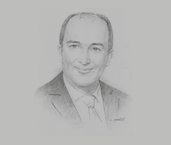Rachid Aouine, Director, Regional Investment Centre of Fez- Meknes: Interview

Interview: Rachid Aouine
What are the priorities of socio-economic development in the Fez-Meknes region?
RACHID AOUINE: Since the 2016 administrative reorganisation, which reunited the two urban areas of Fez and Meknes, the region has comprised a zone of 40,000 sq km and a population of 4.2m. Historically, it is a region where people have come to study and trade, due to its well-known universities and its geographical position at the centre of the country.
Its economic activity has always been dominated by agriculture, thanks to its fertile land. The sector contributes 20% to regional GDP and remains the foremost provider of jobs. The region’s main agricultural outputs include olives (which account for 25% of national production), animal husbandry, cereals, onions, apples, pears, figs, capers and grapes, with Meknes being famous for its wines and spirits. This agricultural imprint creates a lot of possibilities in the region to develop agri-business, which is supported by the Green Morocco Plan. Crop yields have improved and investments are being made to enhance storage, processing and export capacities.
The region offers substantial incentives to investors. The Agropolis zone in Meknes, for example, offers fitting conditions to set up a business. It is a dedicated industrial zone that is logistically well connected and provides easy access to cost-competitive human resources. The government is backing investment projects of this sort, both administratively and financially, and is covering up to 30% of costs. There are currently more than 60 projects under development. Growing agri-business has tended to attract other industries as well, notably in the automotive segment. International car parts suppliers like Delphi and Yazaki currently employ about 5500 people in the region, and they intend to keep growing.
Additionally, the region has significant touristic assets. The hinterland is famous for its beauty and is well suited for green and eco-tourism. The UNESCO World Heritage site at Volubilis attracts visitors interested in Roman ruins. The medinas in both Fez and Meknes are among the best known across the country, while the mountainous area of Ifrane is a destination for skiers. The region is also famous for its thermal springs, and the French brand Vichy recently opened a spa in Moulay Yacoub province. Lastly, Fez benefits from its spiritual and cultural status, as it is an important pilgrimage destination, especially for people from Senegal and Côte d’Ivoire.
How can Fez-Meknes leverage its existing assets?
AOUINE: Private and public actors have been working hand-in-hand to support positive trends in tourism. A new terminal has been opened at the Fez-Saïss Airport, lifting its capacity from 500,000 to 2.5m passengers per year. Airline operators such as Air Arabia or Ryanair have also multiplied their weekly connections between Fez and European cities.
The Fez medina is undergoing a significant rehabilitation project, and investments in hospitality are on the rise. Around Dh340m (€30.6m) was invested in hotels and guesthouses in 2018, and there are currently several projects under way that are worth a total of Dh894m (€80.4m). By the end of December 2018 more than 588,000 tourists had visited Fez.
Another strategy is to capitalise on the region’s strong footprint in education. With eight universities and 35 vocational training centres, Fez-Meknes is the country’s foremost hub for academia. Apart from the fact that it is a huge asset to be able to attract companies that need extensive human resources, the region also aims to play a role in the development of the knowledge economy. It keeps investing in innovation and research, as well as in the formation of partnerships with international entities. There is a perfect example in the evolution of offshore activity in Fez Shore, which today employs 6000 people, including a growing number of engineers.
You have reached the limit of premium articles you can view for free.
Choose from the options below to purchase print or digital editions of our Reports. You can also purchase a website subscription giving you unlimited access to all of our Reports online for 12 months.
If you have already purchased this Report or have a website subscription, please login to continue.

